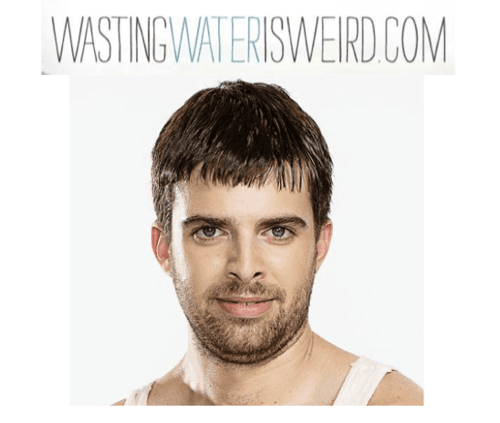
Last year's "Wasting Water is Weird" PSA campaign won the hearts of media insiders because it turned a norm -- freely flowing water -- on its head. Water is ubiquitous when a faucet flows freely and wasting often happens in the privacy of a bathroom or kitchen. What's the most impactful way to get the message through to potentially reluctant customers? Laughter.
The campaign garnered an impressive 432 million impressions - not bad, considering the initial investment from Bosch, Kohler, Lowe's, and P&G was only $600,000.
How did these four groups - competitors in some classes - ever manage to join together to produce any kind of public service announcement? Let alone one as risqué as that with creepy Rip as its spokesperson?
The answer comes from Suzanne Shelton, President and CEO of The Shelton Group, the developers of the concept and content. Shelton spoke at Sustainable Brands 2012.
The Shelton Group, a sustainable research and production firm, developed the campaign pro bono while the brands put up the production funds. The partnership began with the problem: water shortages and a lack of awareness about the need to conserve water. The brands involved assumed that consumers were wasting water because they didn't know any better. The project started with the assumption that Americans just need to better understand the vital importance of water conservation.
The Shelton Group did some research and discovered that in many cases people do know that they need to conserve water - but that fact alone didn't change their behavior. As Shelton said, "Shorter showers are not awesome." It takes more than knowledge to change behavior because change can be uncomfortable.
People needed to be pushed out of their comfort zone in order to be moved to act. The Shelton Group proposed a challenging shift in the project goals: rather than focusing on awareness-building, the campaign would focus on behavior change. The path to behavior change involves four steps: move people from automatic behaviors to conscious choices, make the problem visual (visuals are very compelling motivators), make the problem uncomfortable enough to change, and give people a specific simple action.
Twenty-two percent of people are actively engaged in green and sustainable behaviors, and the Shelton Group figured that if they could be made aware that their behaviors were not matching their values, they might have a shot at changing their behavior. But that meant making people a bit uncomfortable. Hence, Rip was born.
Shelton wasn't sure if the brands involved would stick around after they heard about the shifting goals and the new campaign spokesman, a creepy guy. But, in fact, the collaboration encouraged everyone to stay on board.
When brands collaborate, it's possible to take greater creative risks
Because there were multiple brands participating, they were able to share the risk of producing an off-color ad campaign. Says Shelton, "Rip was a risk – suddenly the risk was spread among multiple brands so it was easier to buy in." Rather than creating infighting, the collaboration allowed the groups to share responsibility - and blame - if there was negative feedback.
There were also a number of other lessons learned:
Brands can make a bigger impact together
This campaign generated hundreds of millions of impressions and continues to receive online views, said Shelton. "Just imagine if Lowe's had taken their $100k and tried to make a difference, they would have had a much smaller impact."
Innovative brand integration
The Water is Weird spots didn't draw attention to their sponsors at all - they didn't even include logos. The brands get their chance to engage through the Water is Weird homepage. Rip has his own Facebook page and Twitter feed, which allowed the brands to interact with Rip and make suggestions like water-saving faucets.
Here's a look at one of their spots:
http://youtu.be/-I1oyppakM0
Jen Boynton is the former Editor-in-Chief of TriplePundit. She has an MBA in Sustainable Management from the Presidio Graduate School and has helped organizations including SAP, PwC and Fair Trade USA with their sustainability communications messaging. She is based in San Diego, California. When she's not at work, she volunteers as a CASA (court appointed special advocate) for children in the foster care system. She enjoys losing fights with toddlers and eating toast scraps. She lives with her family in sunny San Diego.














